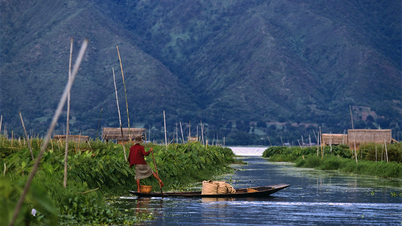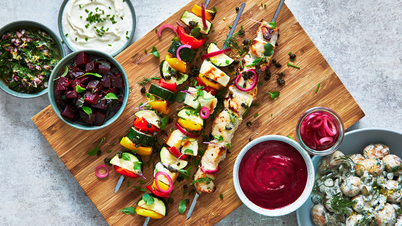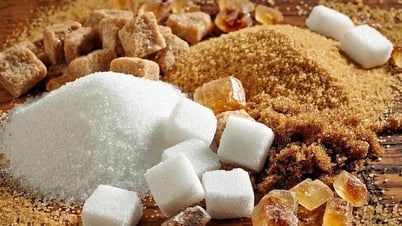
Those were hot summer days, people were drenched in sweat, everyone seemed exhausted. Summer meals in every family usually had some kind of soup to help… go down the rice. And crab soup became a great choice.
Catching crabs is very easy, especially in rice fields. Carry a plastic bucket with you when harvesting, and keep an eye out while harvesting.
Seeing crabs crawling underfoot, quickly grab them and put them in the bucket.
In hot weather, the lazy crabs are looking for food, lying still in one place under the rice roots and in caves to avoid the heat. I still remember that every time I saw crabs, the fields were bustling with harvest.
People called out to each other, especially the children, when they saw the crab they cheered loudly. None of them were afraid of the mud, they bowed their heads down to the straw roots, gently used their hands to catch the bewildered crab and put it neatly in the bucket.
People in the countryside, both adults and children, can tell which crab is male and which is female at a glance. After catching the crab, put it in a large basin, use chopsticks or a big stick to stir it a few times until it is “drunk”, then wash it with lots of water until it is clean. In the time when there were no blenders, the stone mortar was still the “true love”.
Every house has a huge stone mortar and pestle carved from an old eucalyptus tree. After removing the shell and apron, the crabs are pounded. While the parents pound, the children use grapefruit thorns to pick out the crab fat and put it in a small bowl.
The bowl of crab paste seems small but it is the soul of the whole pot of soup. Field crab soup is delicious with any kind of vegetable. But perhaps the most delicious is still cooked with mixed vegetables from the garden.
Mixed vegetables are usually a handful of Malabar spinach leaves, jute leaves, sweet potato leaves, squash...
When the pot of crab soup boils, add the vegetables, then add the crab paste and remove from heat. The golden, fatty crab paste adds to the appeal of the soup.
Crab soup must be served cold to feel its coolness. To increase the deliciousness, the crab soup is served with pickled eggplant. Take a sip of the soup, bite into the eggplant, and in no time the pot of rice will be gone.
After the harvest, to make the meal more appealing, my mother went to the market to buy a few ounces of rice vermicelli to boil and make noodles. She also boiled the crab water mixture, seasoned it to taste, and added a pinch of cherry tomatoes that were sour and refreshing.
Go to the garden and pick some green onions, coriander, and basil. Scoop out a bowl of crab noodle soup, and the whole family gathers around. Perhaps in my life, that is the most delicious bowl of crab noodle soup I have ever eaten.
More than twenty years have passed. In the countryside, the rice growing area has shrunk, partly because people are no longer interested in agriculture , and partly because they have to exchange land for industrial zones, factories or other more productive crops.
Field crabs are still available in the summer, but people rarely catch them. For those who are far from home, they are always a familiar, clear image to illuminate the years of life...
Source


















































































Comment (0)